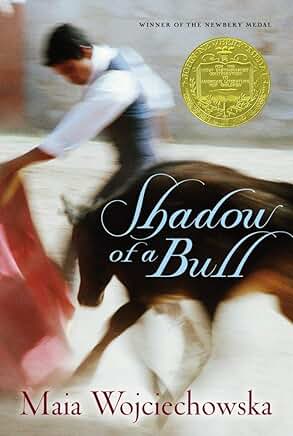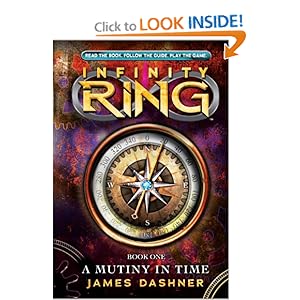Barefoot Books, a publisher and bookseller dedicated to producing inclusive and diverse books, sent me a selection of lovely books that I can’t wait to write about. Their website says, “At Barefoot Books, our mission is to share stories, connect families and inspire children.” I’m impressed with the quality and diversity of the books I have been able to review from Barefoot Books.
 My Big Barefoot Book of Spanish & English Words by Sophie Fatus. This picture dictionary includes words paired with pictures, but also a simple narrative that takes readers through the day with a family in Spanish. Each vocabulary word and each narrative sentence is accompanied by English translation. Beginners aren’t going to learn much grammar or sentence structure from a book like this one, but it’s a great format for vocabulary building. The illustrations are bright and colorful, acrylic painting and colored pencil, and the book itself is large enough for two people to share comfortably. No pronunciation guide, but again it looks like a great vocabulary builder.
My Big Barefoot Book of Spanish & English Words by Sophie Fatus. This picture dictionary includes words paired with pictures, but also a simple narrative that takes readers through the day with a family in Spanish. Each vocabulary word and each narrative sentence is accompanied by English translation. Beginners aren’t going to learn much grammar or sentence structure from a book like this one, but it’s a great format for vocabulary building. The illustrations are bright and colorful, acrylic painting and colored pencil, and the book itself is large enough for two people to share comfortably. No pronunciation guide, but again it looks like a great vocabulary builder.
 The Wise Fool: Fables from the Islamic World by Shahrukh Husain and Michael Archer. Mulla Nasruddin, “a legendary character whose adventures and misadventures are enjoyed across the Islamic world,” is the subject of these tales from the Middle East and Northern Africa. He’s a “wise fool”, the kind of guy who is often the butt of the joke but who gets the last word anyway in his disingenuous and sometimes innocent, sometimes shrewd, wisdom. Mullah Nasruddin is not above a little white lie or a trick now and then if he thinks it might serve a higher purpose, but he’s generally a harmless and benign presence in these tales. These stories would make a good comparison/contrast to Aesop’s fables, or one could try to pair each story with one of Solomon’s proverbs in the Bible. Just reading the stories and enjoying their sly wisdom could spark discussion and give a good introduction to Islamic and Middle Eastern culture. The illustrations are beautiful collage-type spreads in an Islamic mosaic style, but the many pages where the print is imposed on a deep colored background were hard on my (elderly) eyes.
The Wise Fool: Fables from the Islamic World by Shahrukh Husain and Michael Archer. Mulla Nasruddin, “a legendary character whose adventures and misadventures are enjoyed across the Islamic world,” is the subject of these tales from the Middle East and Northern Africa. He’s a “wise fool”, the kind of guy who is often the butt of the joke but who gets the last word anyway in his disingenuous and sometimes innocent, sometimes shrewd, wisdom. Mullah Nasruddin is not above a little white lie or a trick now and then if he thinks it might serve a higher purpose, but he’s generally a harmless and benign presence in these tales. These stories would make a good comparison/contrast to Aesop’s fables, or one could try to pair each story with one of Solomon’s proverbs in the Bible. Just reading the stories and enjoying their sly wisdom could spark discussion and give a good introduction to Islamic and Middle Eastern culture. The illustrations are beautiful collage-type spreads in an Islamic mosaic style, but the many pages where the print is imposed on a deep colored background were hard on my (elderly) eyes.

Mama Panya’s Pancakes by Mary and Rich Chamberlin, illustrated by Julia Cairns. This picture book is a backlist title, originally published in 2005. However, it’s a worthy multicultural story, set in Kenya, about a boy and his mama who are planning a pancake supper. Mama rather mysteriously tells Adika that she will make ” a little bit and a little bit more” pancakes when he ask how many pancakes she plans to cook. So, Adika feels free to invite the entire community, all of their friends and acquaintances, to join them for the pancake supper. Will there be enough? The story ends like the old European tale Stone Soup and shows how a village can come together in generosity and community.

My Granny Went to Market: A Round-the-World Counting Rhyme by Stella Blackstone and Christopher Corr. Another backlist title from 2005, this counting book has Granny visiting ten different countries on a magic carpet purchased in Istanbul, Turkey at the beginning of the book. She ends up in Peru where Granny gives the magic carpet away to another adventurer. The rhymes are adequate, both rhythm and rhyme a little off, but the colorful pictures and the journey itself all around the world are worth a look. It’s short and sweet, for beginning world travelers.

The Beeman by Laurie Krebs and Valeria Cis. Yet another backlist title (2008), this one begins with a poem about our dependence on bees by classic children’s poet Aileen Fisher. Then, Ms. Krebs writes her own poem in the style of This Is the House That Jack Built and tells about a boy’s admiration for his grandpa “who’s know in our town as the Beeman.” All the many aspects and stages of beekeeping and honey extraction are examined in rollicking rhyme as the boy and his grandfather care for the bees together. Then, there’s more information bout bees an beekeeping in the back of the book as well as a recipe for Grandma’s Apple and Honey Muffins. This story in rhyme is definitely a “keeper”.
 Never Trust a Tiger: A story from Korea, retold by Lari Don, illustrated by Melanie Williamson. Based on the traditional Korean tale “The Tiger in the Trap”, this easy-to-read folktale plays out in six brief chapters. A merchant rescues a tiger from a pit where the tiger is trapped, but the tiger immediately proceeds to repay the merchant’s good deed with a very bad deed: the tiger is determined to eat the merchant. “You can’t follow a good deed wth a bad deed,” says the merchant. And the two of them decide to find a judge who can tell them whether or not bad deeds can follow good ones. The moral of the story: never trust a tiger, or be careful whom you help.
Never Trust a Tiger: A story from Korea, retold by Lari Don, illustrated by Melanie Williamson. Based on the traditional Korean tale “The Tiger in the Trap”, this easy-to-read folktale plays out in six brief chapters. A merchant rescues a tiger from a pit where the tiger is trapped, but the tiger immediately proceeds to repay the merchant’s good deed with a very bad deed: the tiger is determined to eat the merchant. “You can’t follow a good deed wth a bad deed,” says the merchant. And the two of them decide to find a judge who can tell them whether or not bad deeds can follow good ones. The moral of the story: never trust a tiger, or be careful whom you help.
 Lola’s Fandango by Anna Witte, illustrated by Micha Archer, narrated by The Amador Family. This picture book, set in Spain, is accompanied by a audio CD narration with flamenco music as a background. Lola wants to distinguish herself from big sister Clementina by learning to dance the flamenco, but to do so Lola must practice hard. And she must find her duende (spirit, attitude, courage). Fandango, as well as I can ascertain, is a particular style of flamenco. This book would be hard to read aloud for those of us who are unfamiliar with flamenco and its rhythms. Lola practices the rhythm over and over, “Toca, toca, TICA! Toca, toca, TICA! Toca, TICA! Toca, TICA! Toca, TICA!” I would have no idea how to read this properly, so I’m glad the CD narration is included. There’s also a Spanish version of this title in the Barefoot Books online catalog.
Lola’s Fandango by Anna Witte, illustrated by Micha Archer, narrated by The Amador Family. This picture book, set in Spain, is accompanied by a audio CD narration with flamenco music as a background. Lola wants to distinguish herself from big sister Clementina by learning to dance the flamenco, but to do so Lola must practice hard. And she must find her duende (spirit, attitude, courage). Fandango, as well as I can ascertain, is a particular style of flamenco. This book would be hard to read aloud for those of us who are unfamiliar with flamenco and its rhythms. Lola practices the rhythm over and over, “Toca, toca, TICA! Toca, toca, TICA! Toca, TICA! Toca, TICA! Toca, TICA!” I would have no idea how to read this properly, so I’m glad the CD narration is included. There’s also a Spanish version of this title in the Barefoot Books online catalog.
There you have it. I’m sold on all of these books—and on books from Barefoot Books, generally. And I got to take a trip around the world while reading these delightful titles. What a bargain!












